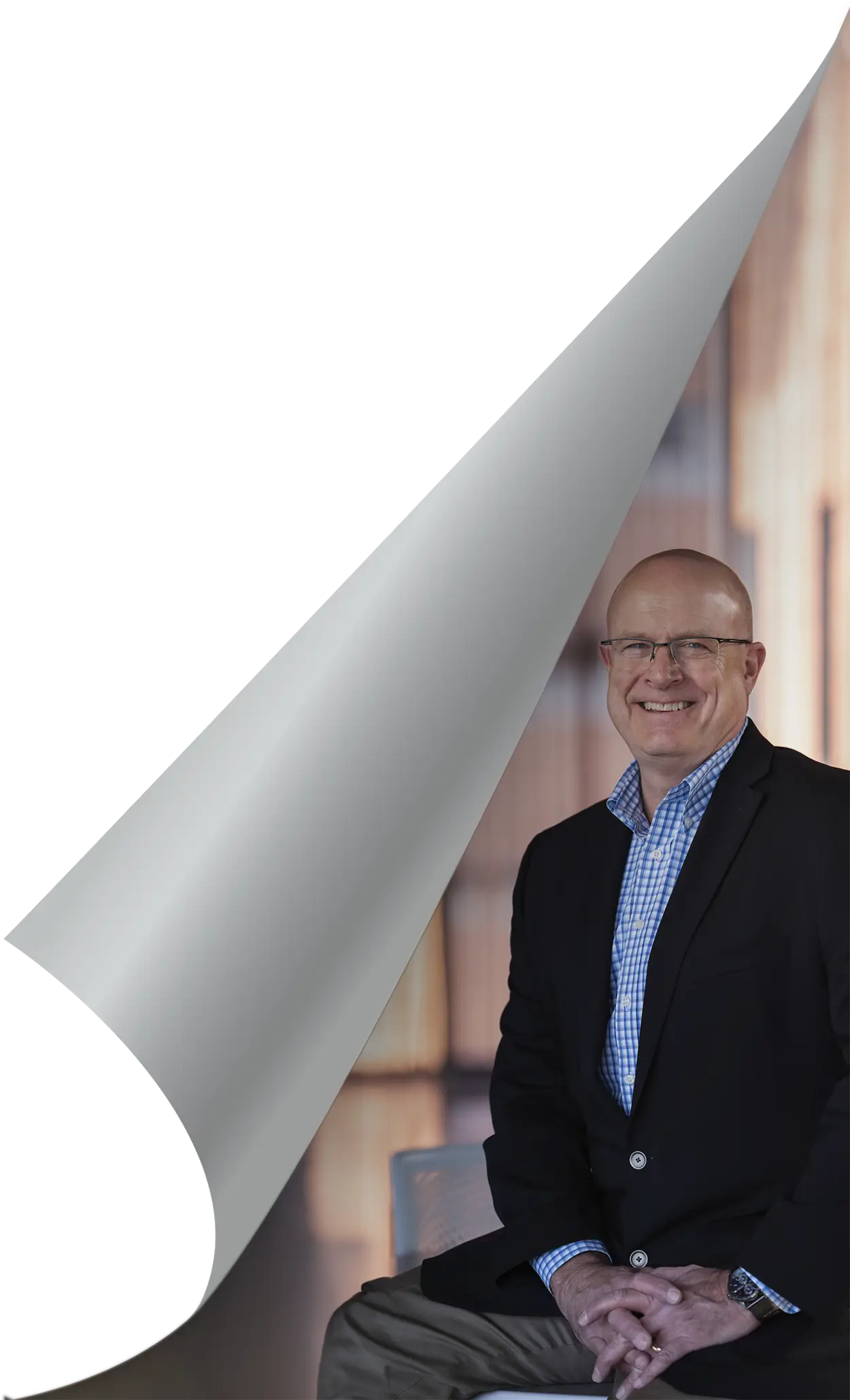How to Make, and Keep, Friends for Life
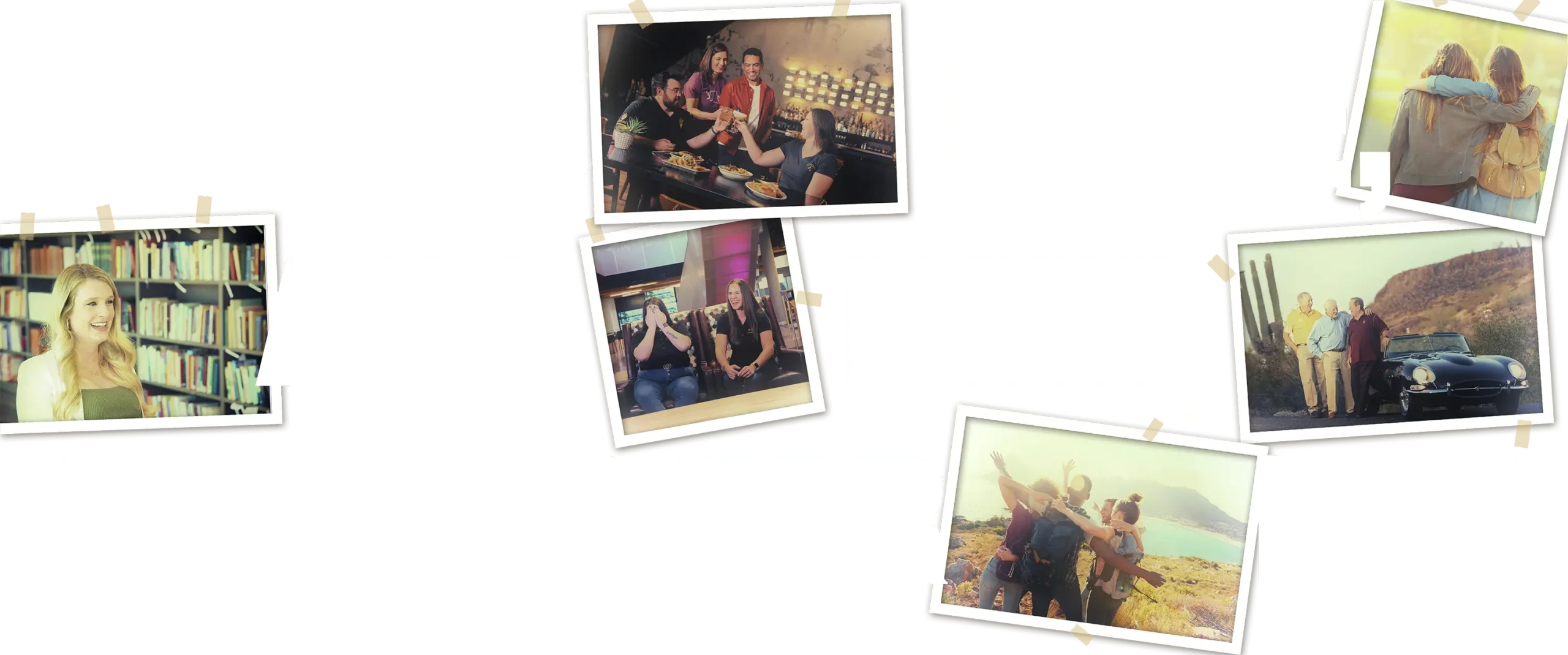
Friendships matter—they lift our spirits and lengthen our lives. But they’re harder to make as we move away from childhood dodgeball games with neighborhood pals, school projects, and other activities where friendships naturally grow.
Give it time
This is from a man who still sees his best friend from high school and ASU daily because he married her 52 years ago. Sheinbein also makes a distinction between his friends and acquaintances. The people who are with you through good times and bad earn the sparingly given designation of “friend” in his heart.
He points to friends he and his wife have known for decades: a couple they met through their synagogue, then shared the joy of watching children celebrate a bar or bat mitzvah, partied, laughed, and, when the other couple’s son died of a heart attack on Mother’s Day at the age of 22, wept together. “Those are the experiences that define what friendships are,” Sheinbein says.
“The value of friendship is knowing that if you need something, there’s somebody you can depend on and is willing to help,” he continues. “I’m not talking about giving monetarily. I’m talking about giving time.”
It’s a matter of making time, too, because while a phone call is good, in-person contact is even better. “I think the cell phone—as great a tool as it has become—has also created an atmosphere where people don’t talk to each other as much anymore,” Sheinbein says. “An important part of establishing friendships is talking one-on-one, face-to-face, not on a device. Developing a friendship takes time. It doesn’t happen instantaneously.”
To put Sheinbein’s advice into practice, go to something that meets regularly over time. So instead of attending one W. P. Carey signature event, attend all the signature events offered during the fall and spring seasons. This practice takes advantage of the “mere exposure effect,” or our tendency to like people more when they’re familiar to us.
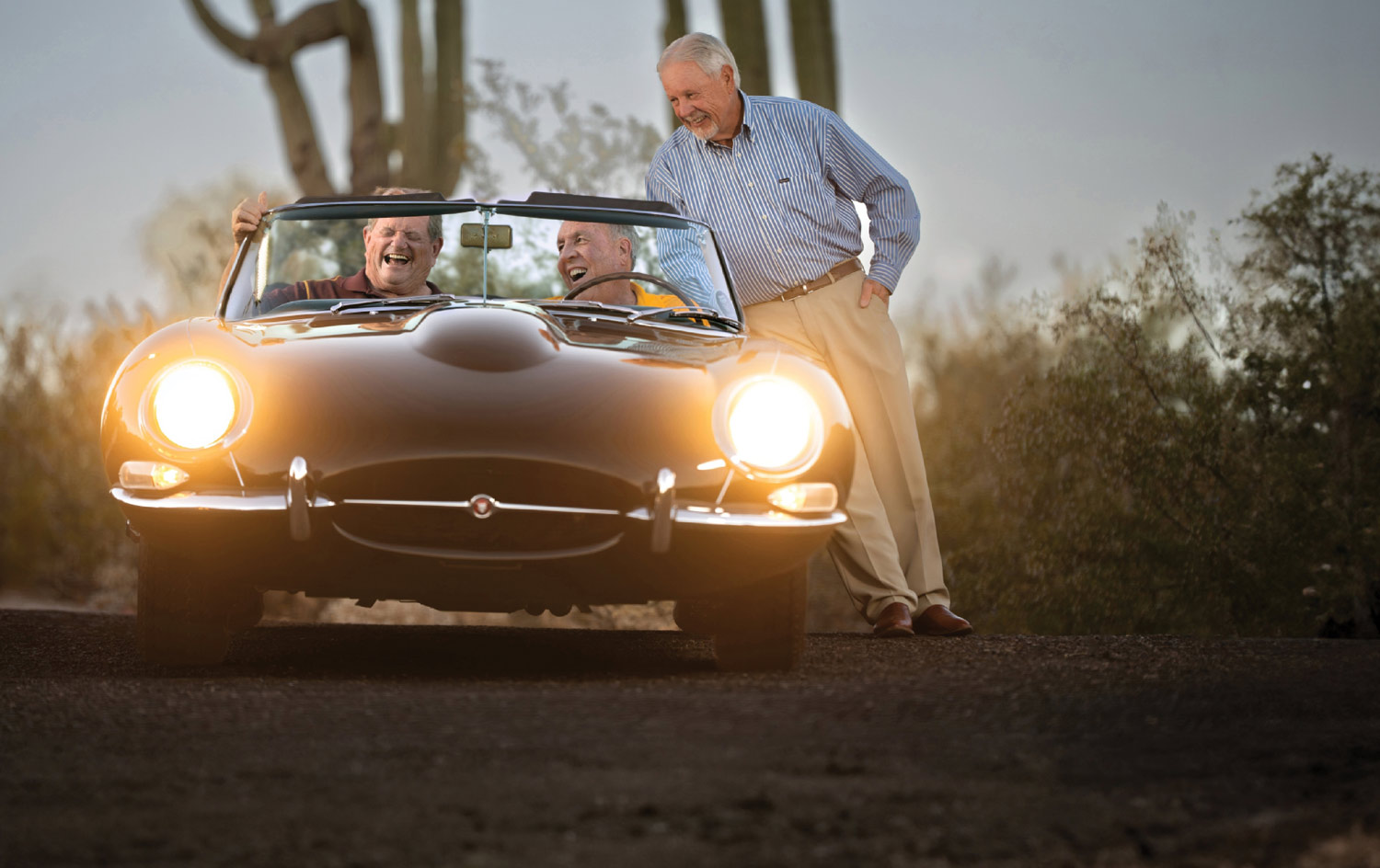
Larry Fleming (BS Business Administration ’72),
and Terry Bohl (BS Marketing ’67)
Make good friends through good business
Over the years, Fleming has launched two construction companies from scratch and bought a used-car dealership just because he likes cars, although the ones he’s collected are classic cars. “I’ve had great relationships with clients,” he says. “You learn what’s important to each other. Mutual trust and respect develop. I’ve had many clients become friends, and they’re people I still see today, even though I may have completed their particular project 20 years ago.”
Fleming has also had contractors who worked for him become lifelong friends. How? “Looking out for their interests, being honest, giving them fair compensation—I treat people how I want them to treat me,” he says.
Fleming made friends among his employees, too. For them—all of his employees—he found new positions they could go to when he shut down his construction company last year after 25 years in business. “The people who hired them were very pleased to get them.”
Decency isn’t the only reason Fleming has made friends in business. He also works hard at that goal. His tip for other friend-seekers is this: “Get out and do things with people you’re working with. Even if you’re working remotely, make some time out for lunch with people now and then.”
Be intentional
Carlin met her BFF in the MBA program. Both were newcomers to Arizona, and both were in friend-making mode. “We had no idea in the spring of 2020 that our entire program would change,” she recalls. “The bonds we made during [the COVID-19 lockdowns] helped build our friendships. You have to be intentional about staying in touch with people when you don’t have the in-person social interactions you’d like.”
For Carlin, the impact of the pandemic has made friendships more of a priority, something she adds to her daily to-do list. “Even if it’s just a phone call or text or sharing a video you think is funny, it’s important to check up on people and let them know you’re thinking about them,” she says.
She also maintains that it’s vital to recognize and remember what friendships are and aren’t. “Different friends play different roles in our lives,” Carlin explains. “You never have one friend who can fill all the roles. That’s too much to put on one person or friendship.” She adds that it’s OK to have friends who are your go-to for support and friends who are mainly in your life for celebrations or fun.
It’s also OK to take chances on making a new friend. Carlin advises people trying to build their social circle: “If someone asks if you’d like to hang out, just say yes.”
Use technology
This comes from a man who lost his address book—his only record of contacts at the time—when someone stole his briefcase from his car. “How do you find people again?” Richardson asks. “It might take hours to track down one person.”
Richardson still laments losing track of his closest friend from ASU, a man who served as best man at his wedding. “I learned at the 2022 ASU Golden Reunion that he had died approximately five years previously,” he says.
While Richardson isn’t a social media user and jokingly tells people he’s “thinking of going on MySpace,” he says people trying to keep in touch with classmates and colleagues should take advantage of tools such as Facebook and LinkedIn. “Technology is your friend,” he says, “and if you’re dumb enough to keep a paper list, make a backup copy.”
Another social network to consider besides Facebook and LinkedIn is the private W. P. Carey alumni LinkedIn group: wpcarey.asu.edu/linkedin. It consists solely of verified, highly engaged peers you can directly message for potential partnerships, recruitment, mentorships, and more. The ASU alumni website is a place to reconnect, too: alumni.asu.edu.
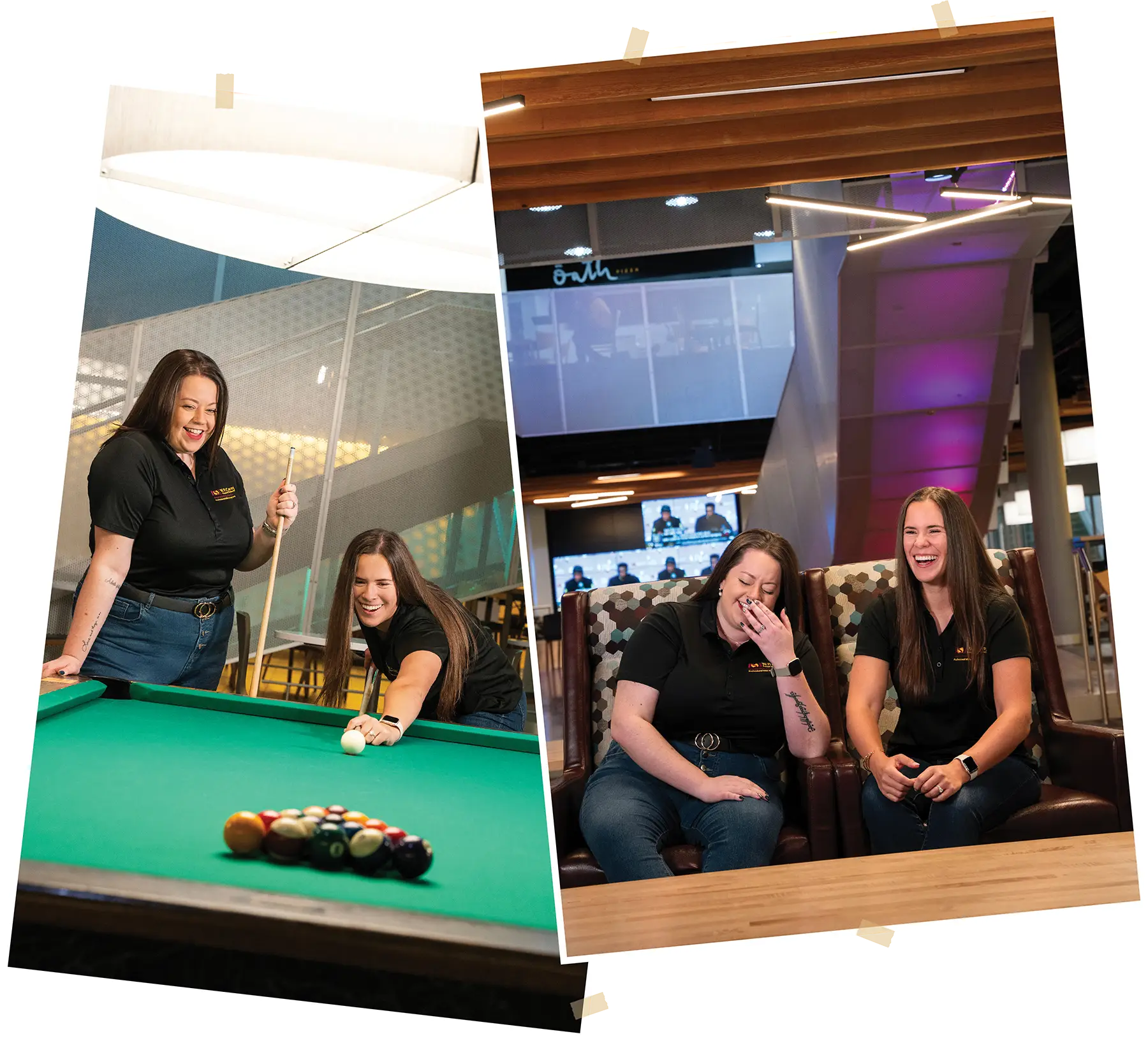
Build core strength
Part of the camaraderie this group developed was born from the challenge of the program. Mutch calls it “11 months of chaos” because most people in her group worked full-time and attended school at night. They bonded through commiseration, she jokes.
“I feel like many of us lose touch with most of our high school friends,” Mutch says. “This was a different dynamic because we spent so much time together: two nights a week and a lot of time doing group work. These people become a big part of your life for a whole year. When it ended, it was hard just to say goodbye.”
Mutch calls her master’s degree program “the most rewarding and stressful year” of her life. “Not only did I get a degree, but I also developed lifelong bonds.”
For others hoping to build a gang of buddies, Mutch recommends taking on the challenge of something like her master’s degree program, particularly if you do it in person. “You get extra benefit from spending that quality time with people … not just with your teachers but also with your groups. You develop relationships you might miss if you did a program online.”
Find out how you can return to W. P. Carey for various educational connections: wpcarey.asu.edu/alumni/learning-opportunities
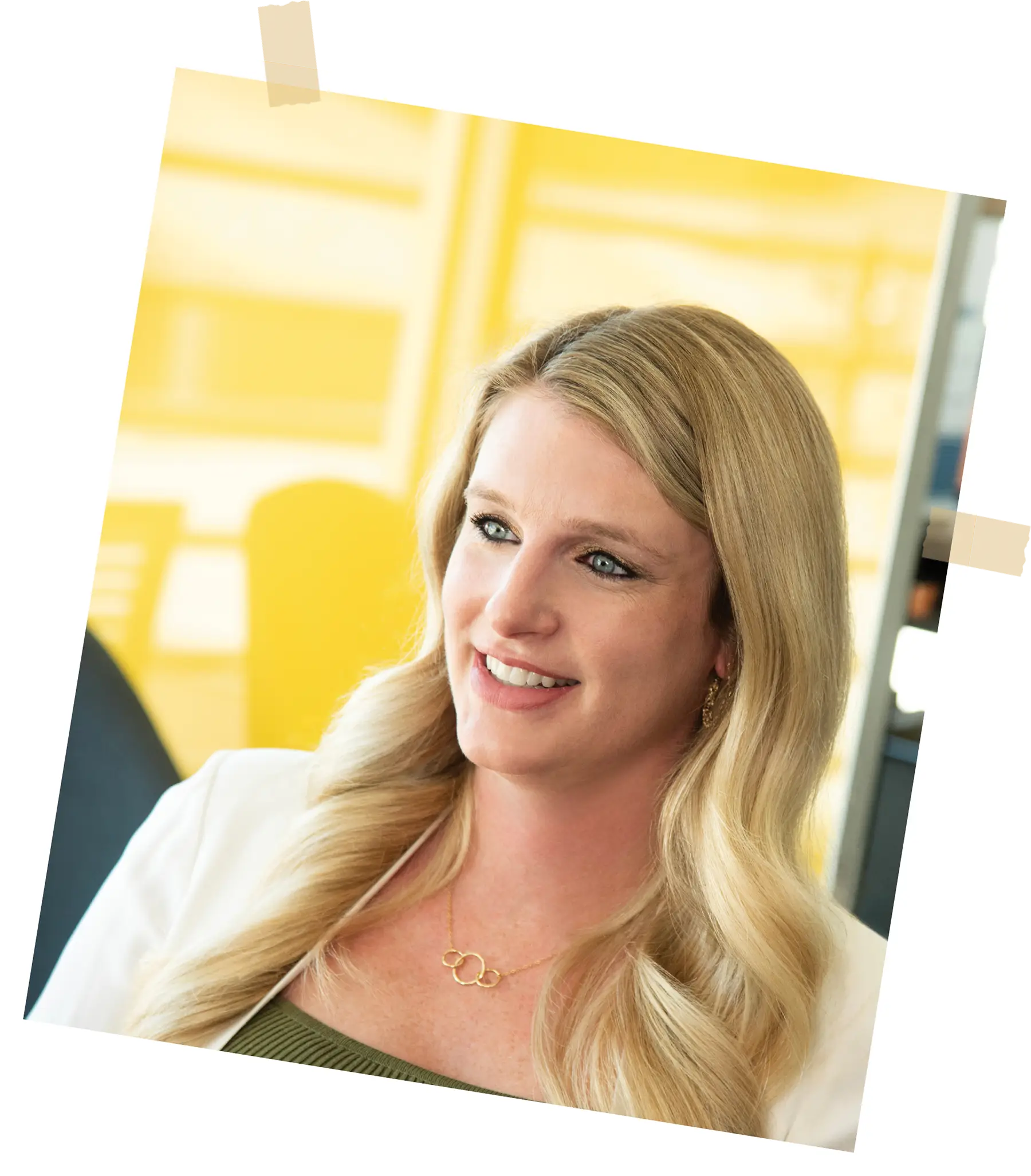
Get your priorities straight
Hucek and her husband landed in Washington, D.C., where there wasn’t much to do because COVID lockdowns left many venues closed, and even co-workers were a Zoom screen away, out of reach, and hard to befriend.
“Many ASU friends I talked to were going through something similar. We’re coming from an MBA program, so our careers are important to us, but COVID put things in perspective. The short-term opportunities were affecting our long-term happiness and satisfaction,” she says.
“For those of us who moved back, we just started to look at what was important to us. We started asking how our careers could complement our personal lives.” Hucek explains.
Such questioning made Hucek and her husband realize they loved Arizona and wanted to make it their home. As others in their MBA cohort made the same decision, they helped each other get back to the Grand Canyon State by networking and supporting each other’s job hunts. “I think that brought us even closer together because we got to know each other deeper,” Hucek says.
Another benefit of the private W. P. Carey alum LinkedIn group (wpcarey.asu.edu/linkedin) is that people and peers post jobs their company may have available for fellow graduates.
How important is a NETWORK of work friends?
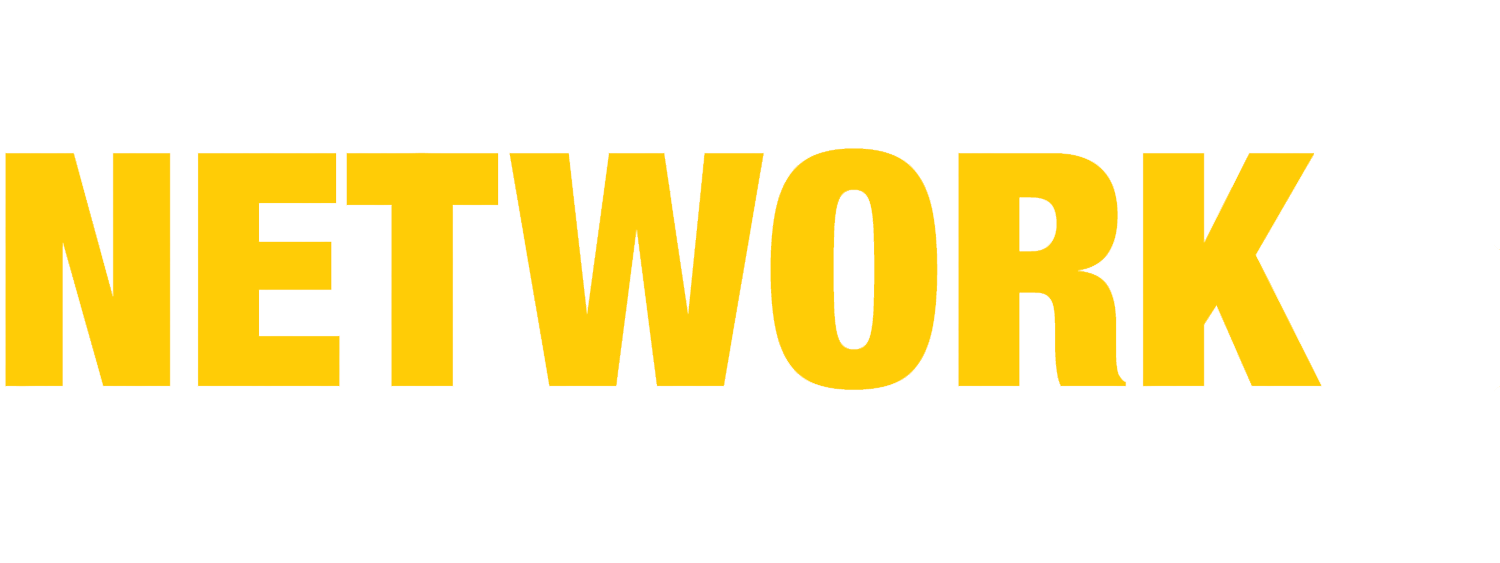
When Ashforth isn’t teaching and researching, he enjoys spending time with friends at sporting events and while hiking. Every Wednesday over dinner and drinks, he catches up with work friends and their partners. He also participates in regular Zoom meetings with out-of-town college friends and frequently speaks to his Toronto-based best friend on the phone. Ashforth estimates that throughout his 38-year teaching career, he’s made approximately 20 good friends through work.
Whether in or outside the workplace, the time it takes to become “good” friends is highly variable, Ashforth says. “The key is that you’re doing things that are very engaging in a way that allows you to connect, so if you have those two things going on, it could happen pretty quickly,” he says. “It’s like falling in love. You can fall in love overnight, given the right circumstances. You can develop a real sense of a person being friendly or being a friend.”
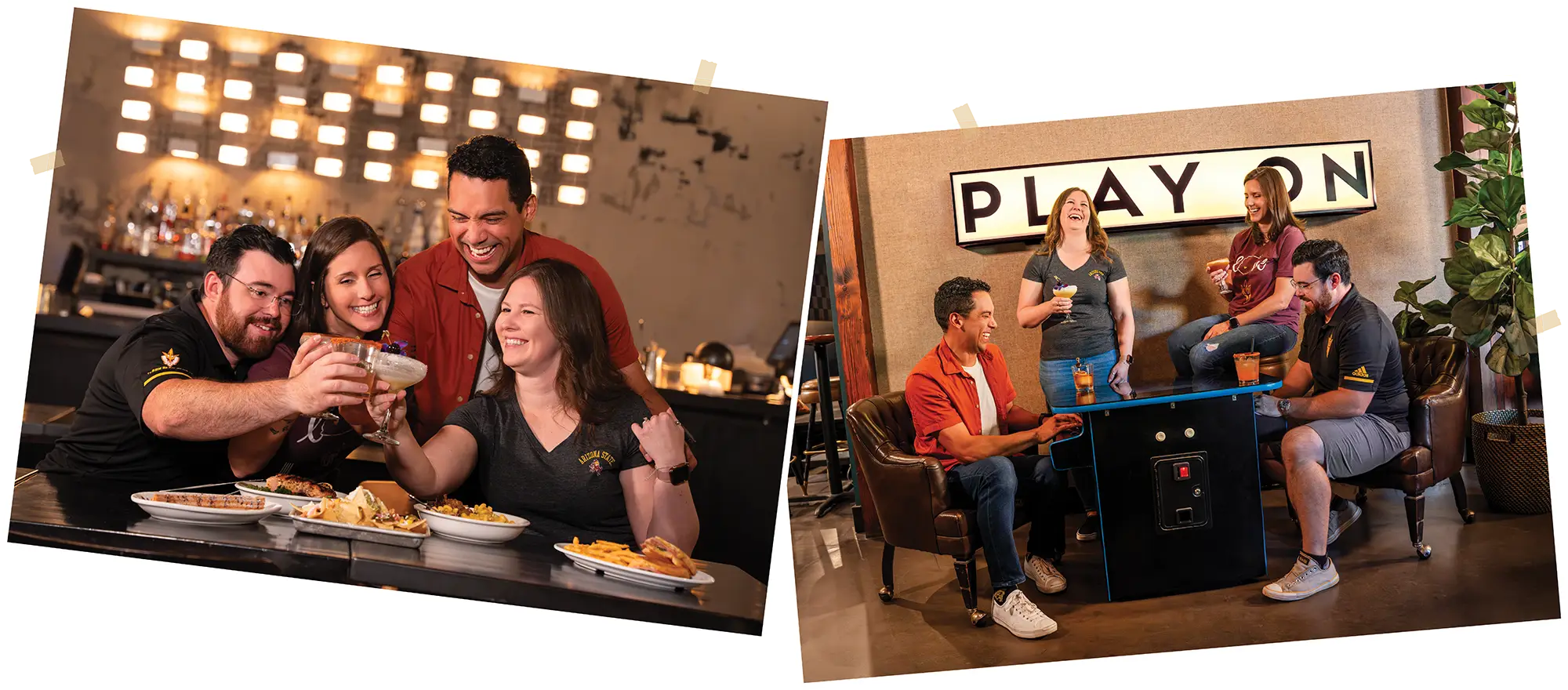
Play for keeps
How does Ackley maintain these long-standing friendships? She works at it.
Ackley nurtures her decades-long friendships with regular communication and get-togethers whenever possible. She doesn’t let those who’ve moved away slip away, either. “I make an effort to contact people at least once a year or more,” she says. “I just reach out and say ‘Hi! How are you doing?’ It’s that personal touch that lets people know you care.” She adds that texting and Facebook make it easy to stay connected.
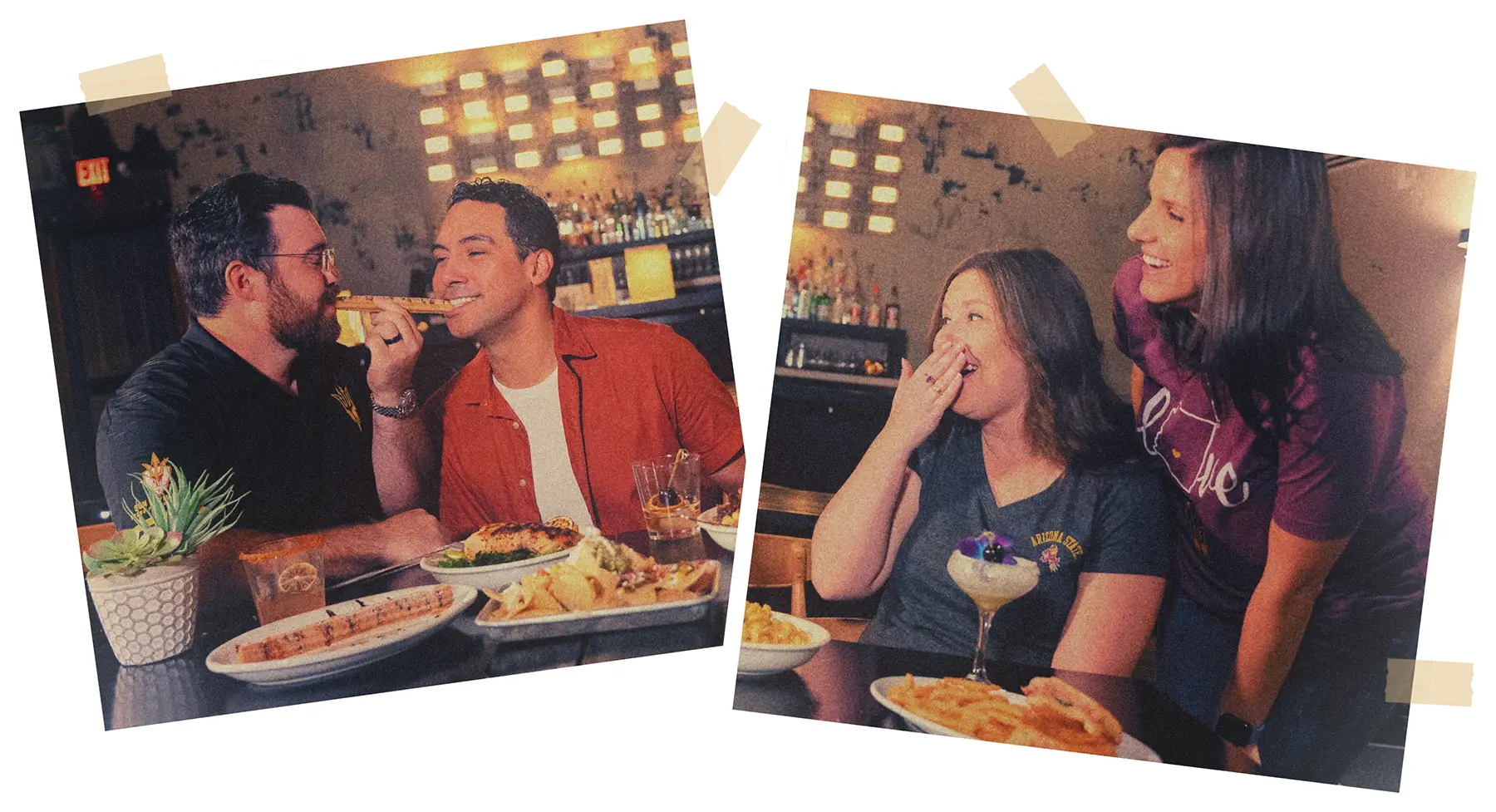
Regents Professor of Management and Entrepreneurship and Horace Steele Arizona Heritage Chair
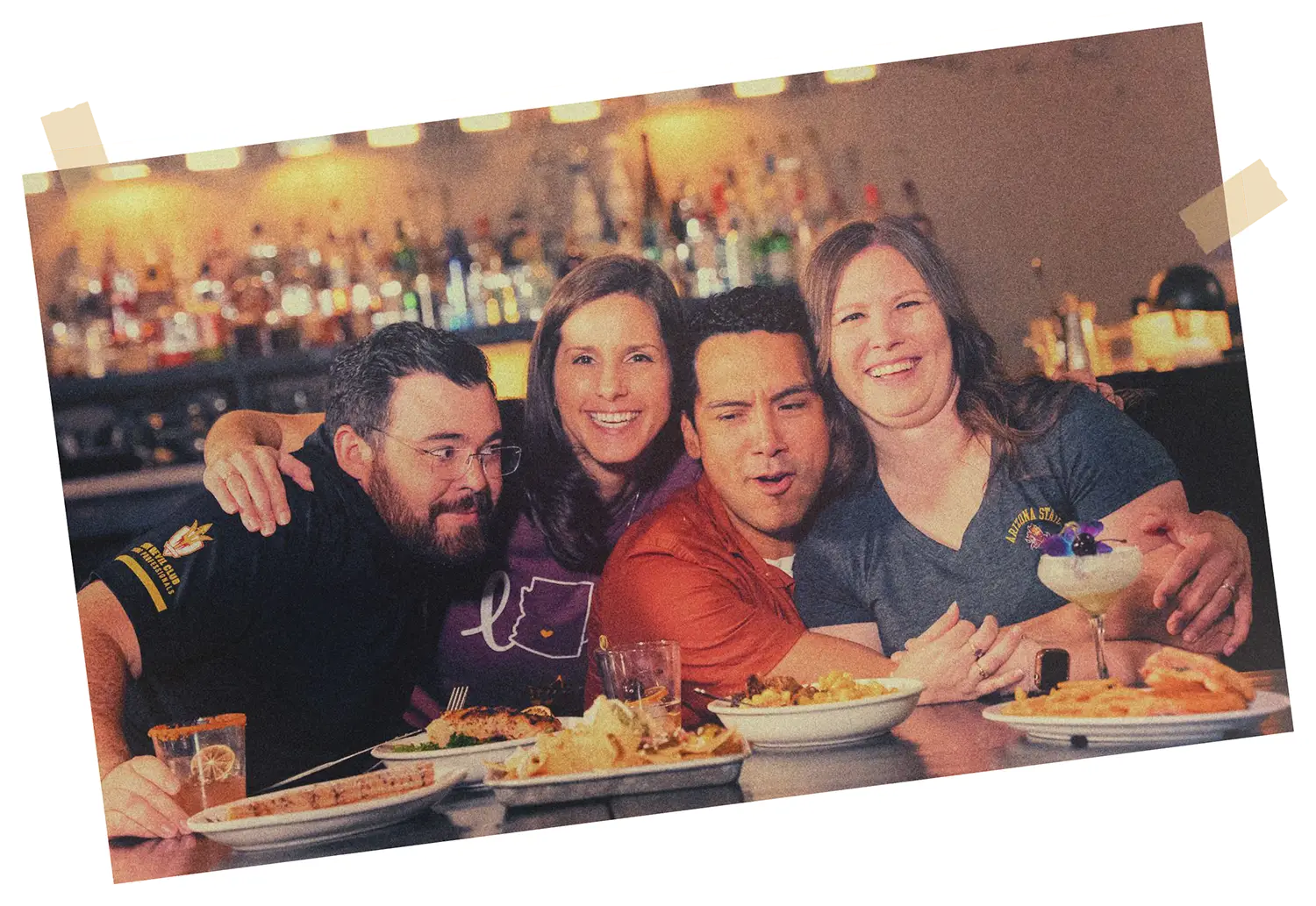
Happy-hour reunions are another way to keep business relationships going, Ackley notes. She points to the Motorola “Geezers” Club, an informal annual gathering of retirees in a local bar, along with its Facebook page that broadcasts information about the community and provides a space for updates or relevant content. With Facebook, Ackley says, such an event might be an excellent way for current or recent MBA students to reunite and stay connected.
It’s worth the effort, Ackley says. “You can’t buy the kind of support and connection you get from long-term friends and fellow alums.”
For W. P. Carey alums who want to keep classmates in their lives, the alumni team helps organize reunions. We’ll send invitations to classmates, recommend campus activities, provide a venue, and handle other event details: wpcarey.asu.edu/alumni/reunions.
